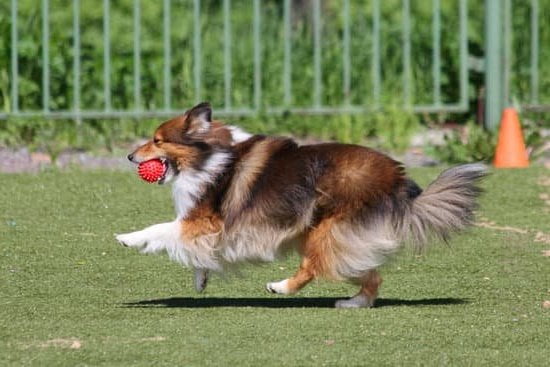Training your dog to give you their paw is a fun and impressive trick that can also have practical applications. In this article, we will explore the step-by-step process of teaching your furry friend to shake hands, from choosing the right treats to troubleshooting common challenges during training.
Whether you’re a first-time pet owner or looking to expand your dog’s repertoire of tricks, this guide will provide valuable insights on how to train a dog to give you their paw.
The foundation of any successful dog training is built upon understanding the importance of the behavior being taught. Teaching your dog to give you their paw not only showcases their obedience and intelligence but also strengthens the bond between you and your pet. With patience and consistency, this simple yet endearing trick can be a great way to engage with your dog and build trust.
When it comes to training your dog, positive reinforcement is key. Choosing the right treats and rewards for training sessions is crucial in encouraging the desired behavior.
By utilizing techniques that focus on rewarding good behavior rather than punishing unwanted actions, you can create a positive learning environment for your furry companion. In the following sections, we will delve into the specifics of introducing the shake command, using positive reinforcement techniques, and troubleshooting common challenges that may arise during the training process.
Choosing the Right Treats and Rewards for Training Sessions
When training your dog to give you their paw, choosing the right treats and rewards is essential for a successful training session. The type of treat you use can make a big difference in how motivated your dog will be to learn the shake command. It’s important to pick treats that are both enticing and easy for your dog to consume quickly, so they can continue with the training without getting too full or losing interest.
Here are some tips for choosing the right treats and rewards for training sessions:
1. Use small, bite-sized treats: Small treats are ideal for training because they can be quickly consumed, allowing your dog to stay focused on learning the shake command. Consider using treats that can easily be broken into smaller pieces if needed.
2. Opt for high-value rewards: High-value rewards, such as pieces of cooked chicken or cheese, are especially effective for motivating your dog during training sessions. These special treats can create extra excitement and eagerness to perform the desired behavior.
3. Keep treats varied and interesting: Rotate different types of treats during training sessions to keep your dog engaged and interested. This will prevent them from getting bored with the same reward and will maintain their enthusiasm for learning how to give you their paw.
By carefully selecting the right treats and rewards for your dog’s training sessions, you can create a positive and rewarding experience that motivates them to learn how to give you their paw willingly.
Introducing the Shake Command to Your Dog
Training your dog to give you their paw can be a fun and rewarding experience for both you and your furry friend. One of the first steps in this process is introducing the shake command to your dog. This command teaches your dog to raise their paw and place it in your hand, and it can be a great way to bond with your pet while also teaching them a new trick.
Start With Basic Training
Before introducing the shake command, ensure that your dog has a good understanding of basic commands such as sit and stay. This will make the training process for the shake command much smoother, as your dog will be familiar with following your cues.
Use Positive Reinforcement
When introducing the shake command, it’s important to use positive reinforcement techniques. Offer treats or praise whenever your dog raises their paw, even if they don’t quite understand what you’re asking for yet. This will help them associate the action with something positive and encourage them to continue trying.
Be Patient and Consistent
Training your dog to give you their paw may take some time, so it’s important to be patient and consistent during the process. Practice the shake command regularly, but keep training sessions short to prevent frustration for both you and your dog. With time and practice, your dog will begin to understand what is expected of them when you give the cue for “shake”.
Using Positive Reinforcement Techniques to Encourage the Behavior
- Positive reinforcement is a crucial aspect of training your dog to give you their paw. This technique involves rewarding your dog for exhibiting the desired behavior, in this case, offering their paw when prompted. When using positive reinforcement, it’s important to choose the right treats and rewards that will motivate your dog during training sessions.
- One effective way to utilize positive reinforcement is by offering your dog their favorite treats whenever they successfully give you their paw. Dogs are often food-motivated, so offering small, bite-sized treats that they love can be a powerful incentive for them to repeat the behavior. Additionally, verbal praise and excited petting can also serve as rewards for your dog during training.
- To effectively train your dog to give you their paw using positive reinforcement, consistency is key. It’s essential to provide the reward immediately after they perform the action, so they can associate giving their paw with receiving a reward. Over time, with consistent practice and positive reinforcement, your dog will learn to offer their paw on command.
| Positive Reinforcement Techniques | Encouraging the Behavior |
|---|---|
| Offering favorite treats | Frequent rewards for successful behavior |
| Verbal praise and petting | Consistency in rewarding the action |
Tips for Reinforcing the Shake Command in Different Environments
Training your dog to give you their paw is an important skill that can be incredibly useful in various situations. Whether you want to impress your friends or simply strengthen the bond with your furry companion, teaching your dog to shake can be a fun and rewarding experience. However, it’s crucial to reinforce the shake command in different environments to ensure that your dog understands and obeys the cue no matter where you are.
Consistency Is Key
Consistency is essential when reinforcing the shake command in different environments. Dogs thrive on routine and repetition, so it’s important to practice the shake command in various locations such as your home, the park, or even during walks around the neighborhood. By consistently practicing in different environments, you can help your dog generalize the behavior and understand that the shake command applies everywhere, not just at home.
Gradual Exposure
When training your dog to give their paw in different environments, it’s important to gradually expose them to new surroundings. Start by reinforcing the shake command in familiar places before gradually introducing more challenging environments. This gradual exposure can help prevent overwhelm and ensure that your dog remains comfortable and focused on following the cue.
Distractions Management
One of the biggest challenges when reinforcing the shake command in different environments is managing distractions. Dogs are easily distracted by unfamiliar sights, sounds, and smells, so it’s important to practice in environments with varying levels of distraction.
Start with low-distraction areas and gradually work your way up to more stimulating environments. By using treats and rewards that are highly enticing for your dog, you can help them stay focused on following the shake command regardless of what’s happening around them.
By following these tips for reinforcing the shake command in different environments, you can help ensure that your dog responds reliably no matter where you are. With patience, consistency, and positive reinforcement techniques, you can teach your furry friend to confidently give you their paw in any situation.
Troubleshooting Common Challenges During Training
Training your dog to give you their paw is a fun and rewarding experience, but it can also come with its challenges. As you work on teaching this command to your furry friend, you may encounter some common obstacles. Here are some troubleshooting tips to help you navigate through these challenges:
- Patience is Key: Remember that every dog learns at their own pace. If your pup is not immediately picking up the shake command, be patient and continue practicing in short, consistent training sessions.
- Adjust Your Reinforcement: If your dog seems uninterested in the treats or rewards you are using during training, try switching them up. Some dogs may respond better to different types of treats such as small bits of cheese or cooked chicken.
- Body Language Awareness: Dogs are highly in tune with body language, so be mindful of your own movements during training. Avoid making sudden or threatening gestures that could make your dog feel uneasy about performing the shake command.
In addition to these troubleshooting tips, it’s important to remain positive and encouraging throughout the training process. With consistency and patience, your dog will eventually learn how to give you their paw on command.
Remember to celebrate each small progression and always end the training session on a positive note. By utilizing these troubleshooting techniques, you will be well-equipped to tackle any challenges that may arise while teaching your dog to give their paw.
Building Trust and Strengthening the Bond With Your Dog Through Training
Training your dog to give you their paw is not just about teaching a cool trick; it is also about building trust and strengthening the bond between you and your furry friend. When your dog learns to respond to your commands, it creates a deeper connection and establishes you as the leader of the pack. This section will provide valuable insights on how training sessions can be instrumental in deepening the bond with your dog.
During training sessions, it is essential to create a positive and nurturing environment for your dog. Use treats, praises, and rewards to encourage good behavior, and avoid any form of punishment or negative reinforcement. Consistency is key when building trust through training; make sure to set aside regular time for practice and be patient with your pet as they learn new skills.
Another essential aspect of building trust through training is understanding your dog’s body language and reactions. By paying attention to how they respond to different commands or environments, you can tailor the training experience to suit their needs. This level of attentiveness shows your dog that you understand them and strengthens the mutual bond between you.
When you approach training as an opportunity to connect with your dog rather than just teach them tricks, you’ll find that the process becomes more enjoyable for both of you. The bond formed during these sessions will enhance communication, build trust, and ultimately lead to a happier and healthier relationship with your beloved pet.
| Benefits | Tips |
|---|---|
| Deepens the bond with your dog | Use positive reinforcement techniques |
| Establishes leadership | Be consistent with training sessions |
| Enhances communication | Pay attention to body language and reactions |
Taking the Shake Command to the Next Level
Training your dog to give you their paw can be a fun and rewarding experience for both you and your furry friend. Once your dog has mastered the basic shake command, you can take it to the next level by teaching them to give both paws. This advanced trick not only impresses onlookers, but it also provides mental stimulation for your dog and further strengthens the bond between you.
To start teaching your dog to give both paws, begin by making sure they are comfortable with the basic shake command. Once they have mastered this, introduce the concept of giving their other paw as well. You can do this by using a separate command, such as “other paw” or “other side”, to differentiate between which paw they should lift.
As with any new trick or behavior, consistency and positive reinforcement are key components in training. Use high-value treats or rewards that your dog is motivated by to encourage them to lift their other paw on command. Praising and rewarding them each time they successfully perform the action will reinforce the behavior and make them more likely to continue doing it when prompted.
It’s important to practice the “give both paws” command in different environments and situations to ensure that your dog fully understands what is expected of them. Start with minimal distractions and gradually add more challenging environments as they become more proficient. With patience, consistency, and plenty of positive reinforcement, you can successfully train your dog to give you both paws on cue.
Advanced Training Techniques for Teaching Your Dog to Give Their Paw on Cue
In conclusion, training your dog to give you their paw is not only a fun trick, but it also strengthens the bond between you and your furry friend. By understanding the importance of training and choosing the right treats, you can introduce the shake command to your dog and use positive reinforcement techniques to encourage the behavior. It’s important to be patient and consistent, especially when reinforcing the shake command in different environments.
As you troubleshoot common challenges during training, remember to always approach the process with patience and understanding. Building trust and strengthening the bond with your dog through training is essential for successful teaching. Once your dog has mastered giving one paw, consider taking it a step further by teaching them to give both paws. This advanced level of training can be a great way to challenge your dog and keep their mind sharp.
Finally, for those who want to take their dog’s training even further, advanced techniques for teaching your dog to give their paw on cue can add an impressive level of obedience and skill. With dedication and consistency, you’ll find that your efforts will pay off as your dog learns new commands and continues to grow in their abilities.
No matter how far along you are in the process, always remember to enjoy the journey and celebrate each small victory along the way. Mastering these techniques will not only show off your pup’s skills but also deepen the bond you share with them.
Frequently Asked Questions
Do Dogs Give You Their Paw?
Yes, dogs can be trained to give you their paw as a form of greeting or to perform tricks. It’s a behavior that can be taught through positive reinforcement and patience.
How Do You Ask a Dog for His Paw?
Asking a dog for their paw involves using a friendly and encouraging tone, while holding out your hand in front of them. Some people say the word “shake” as a command to signal the action they want the dog to perform.
How Do You Get Your Dog to Let You Hold Their Paw?
To get your dog to let you hold their paw, it’s important to build trust and establish a positive association with having their paw handled. This can be achieved through gentle touching during bonding moments such as cuddling or grooming, gradually training them to tolerate having their paws held.

Welcome to the blog! I am a professional dog trainer and have been working with dogs for many years. In this blog, I will be discussing various topics related to dog training, including tips, tricks, and advice. I hope you find this information helpful and informative. Thanks for reading!





